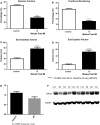BAG3: a new player in the heart failure paradigm
- PMID: 25925243
- PMCID: PMC4463985
- DOI: 10.1007/s10741-015-9487-6
BAG3: a new player in the heart failure paradigm
Abstract
BAG3 is a cellular protein that is expressed predominantly in skeletal and cardiac muscle but can also be found in the brain and in the peripheral nervous system. BAG3 functions in the cell include: serving as a co-chaperone with members of the heat-shock protein family of proteins to facilitate the removal of misfolded and degraded proteins, inhibiting apoptosis by interacting with Bcl2 and maintaining the structural integrity of the Z-disk in muscle by binding with CapZ. The importance of BAG3 in the homeostasis of myocytes and its role in the development of heart failure was evidenced by the finding that single allelic mutations in BAG3 were associated with familial dilated cardiomyopathy. Furthermore, significant decreases in the level of BAG3 have been found in end-stage failing human heart and in animal models of heart failure including mice with heart failure secondary to trans-aortic banding and in pigs after myocardial infarction. Thus, it becomes relevant to understand the cellular biology and molecular regulation of BAG3 expression in order to design new therapies for the treatment of patients with both hereditary and non-hereditary forms of dilated cardiomyopathy.
Figures




References
Publication types
MeSH terms
Substances
Grants and funding
LinkOut - more resources
Full Text Sources
Other Literature Sources
Medical
Miscellaneous

